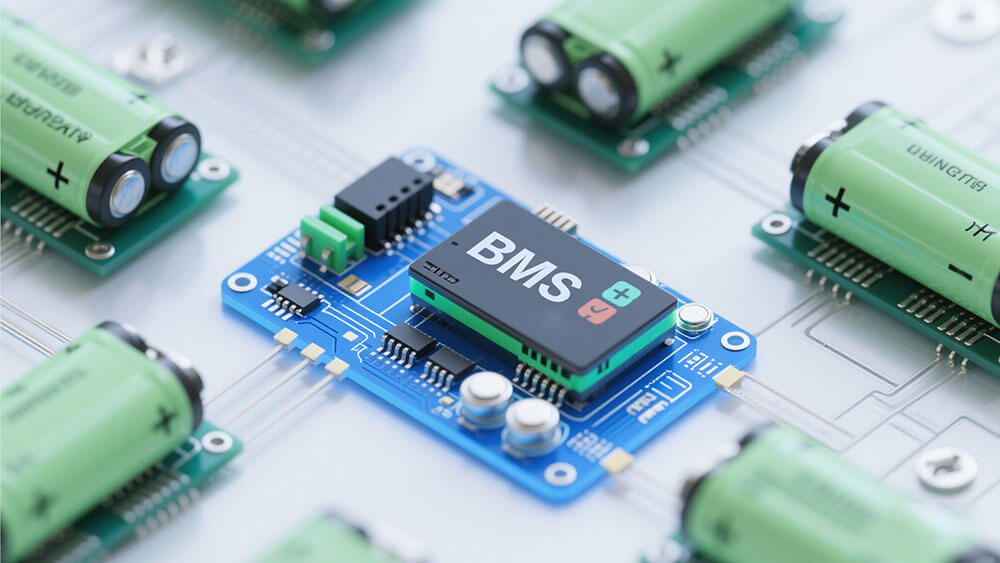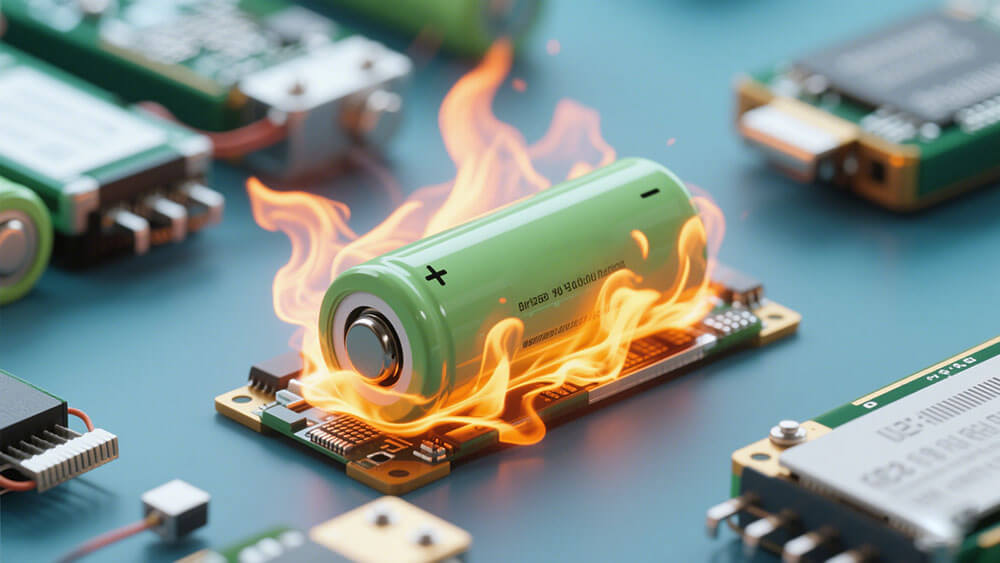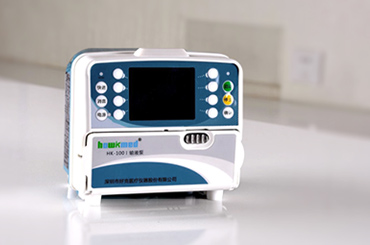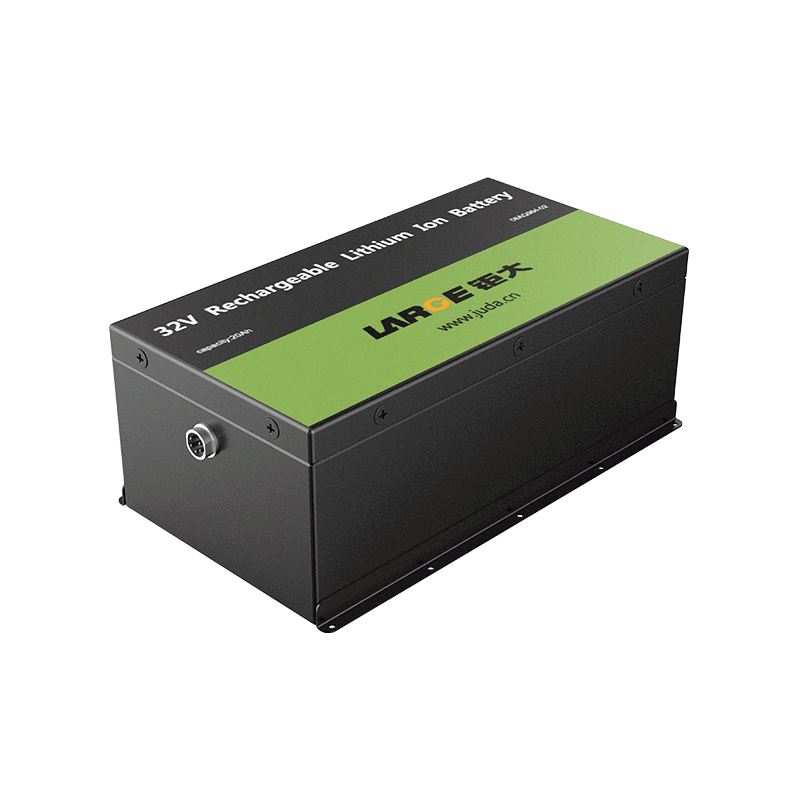-
Key Takeaways
-
Part 1: What is Battery Cell Balancing?+
- 1.1 Definition and Purpose of Battery Cell Balance
- 1.2 How Battery Cell Balancing Works
- 1.3 Common Applications of Battery Balancing
-
Part 2: Why is Battery Cell Balancing Important?+
- 2.1 Benefits for Battery Performance
- 2.2 Role in Extending Battery Lifespan
- 2.3 Importance for Safety and Reliability
-
Part 3: Methods of Achieving Battery Balancing+
- 3.1 Passive Battery Cell Balancing Techniques
- 3.2 Active Battery Cell Balancing Techniques
- 3.3 Role of Battery Management Systems (BMS)
-
Part 4: Risks of Battery Cell Imbalance+
- 4.1 Impact on Battery Efficiency
- 4.2 Accelerated Wear and Degradation
- 4.3 Safety Concerns, Including Overheating and Fire
-
FAQ+
- 1. What happens if a battery pack lacks proper battery cell balancing?
- 2. How does a battery management system assist in battery cell balancing?
- 3. Are active balancing techniques better than passive ones?
Understanding Battery Cell Balancing and Its Importance
APR 17, 2025 Pageview:45

Battery cell balance is crucial for ensuring that all cells in a battery pack maintain equal charge levels. This process not only improves performance and safety but also extends the battery's lifespan. Imbalanced cells can pose serious risks; for instance, research indicates that aging cells may experience voltage deviations, which can increase the likelihood of overheating or even catastrophic failure. Proper battery cell balance helps prevent such hazards while optimizing the state of charge (SOC). For example, balanced batteries like BT1 and BT2 demonstrated SOC improvements from 40% to 87% and 55% to 100%, respectively.
Key Takeaways
Battery cell balancing keeps all cells charged equally. This improves how the battery works and keeps it safe.
Good balancing methods, like active balancing, help batteries last longer. They lower stress on cells and stop them from getting too hot.
Focusing on cell balancing makes batteries work better and more reliably. This is very important for electric cars and green energy systems.

Part 1: What is Battery Cell Balancing?
1.1 Definition and Purpose of Battery Cell Balance
Battery cell balance refers to the process of ensuring that all cells within a battery pack maintain equal charge levels. This equalization is essential because individual cells can have slight variations in capacity or resistance, leading to imbalances over time. When you balance the cells, you unlock the full potential of the battery pack, improving its performance and reliability.
The primary purpose of cell balancing is to prevent overcharging or over-discharging of individual cells. These conditions can cause damage, reduce efficiency, and shorten the lifespan of the battery. By maintaining balance, you ensure that the battery operates safely and efficiently, even under demanding conditions.
1.2 How Battery Cell Balancing Works
Cell balancing works by redistributing energy among the cells in a battery pack. This process can be achieved through passive or active balancing techniques. Passive balancing uses resistors to dissipate excess energy from voltage battery cells as heat. Active balancing, on the other hand, transfers energy from higher-charged battery cells to lower-charged ones, ensuring uniform charge levels.
Studies highlight several benefits of battery cell balancing:
Increased usable capacity: Equalization ensures all battery cells reach the same state of charge, maximizing the battery pack's potential.
Enhanced safety: Balancing prevents overcharging or over-discharging, reducing risks of overheating or failure.
Extended lifespan: Balanced cells experience less stress, leading to longer operational life.
1.3 Common Applications of Battery Balancing
Battery balancing is widely used in industries that rely on battery packs for critical operations. Survey equipment are a prime example, where balanced cells ensure optimal performance and safety. Renewable energy storage systems also depend on balancing to maintain efficiency and reliability over time. Additionally, consumer electronics, such as handheld devices and robotic manufacturers, use balancing to enhance battery life and prevent overheating.
The operational mechanics of balancing systems have been studied extensively. For instance, active dissipative balancing systems utilize resistors for impedance measurement. These systems identify limitations and propose advanced signal processing techniques to minimize hardware requirements. The table below summarizes key findings:
Aspect | Description |
|---|---|
Focus | Active dissipative balancing systems in battery systems |
Methodology | Utilizes balancing resistors for impedance measurement |
Key Findings | Identifies limitations and proposes signal processing techniques |
Implications | Recognized by vehicle manufacturers and academia for battery diagnostics |
EIS Application | Balancing current can be used for electrochemical impedance spectroscopy |
By implementing effective balancing methods, you can ensure that battery packs perform reliably across various applications.

Part 2: Why is Battery Cell Balancing Important?
2.1 Benefits for Battery Performance
Battery cell balancing plays a vital role in optimizing the performance of a battery pack. When cells within a pack operate at equal charge levels, the overall efficiency improves significantly. Balancing ensures that no single cell becomes overcharged or over-discharged, which can degrade performance and reduce capacity. For example, equalizing charge levels maximizes the usable capacity of the battery, allowing it to deliver consistent power across applications.
The table below highlights the key benefits of effective cell balancing:
Benefit | Description |
|---|---|
Avoiding overcharging or over-discharging | Prevents performance degradation and capacity loss. |
Equalizing charge levels | Ensures all cells operate at similar levels, enhancing overall efficiency. |
Maximizing usable capacity | Increases the effective capacity available for use in applications. |
Prolonging overall lifespan | Extends the life of the battery pack by maintaining cell health. |
By maintaining balance, you can unlock the full potential of your battery pack, ensuring reliable performance in demanding environments.
2.2 Role in Extending Battery Lifespan
Effective cell balancing directly impacts the lifespan of a battery. When cells remain balanced, they avoid extreme voltage conditions that accelerate degradation. This leads to better capacity retention over time. For instance, battery management systems (BMS) equipped with advanced balancing algorithms reduce wear and tear on individual battery cells, slowing the rate of capacity fade.
Active balancing techniques, in particular, excel at maintaining voltage uniformity. Research shows that these methods outperform passive techniques in extending battery lifespan, especially in high-demand applications like electric vehicles. By investing in proper balancing methods, you can ensure that your battery pack remains operational for a longer period, reducing replacement costs and environmental impact.
2.3 Importance for Safety and Reliability
Safety and reliability are critical considerations in battery-powered systems. Cell balancing minimizes the risk of thermal runaway, a dangerous condition where overheating can lead to fires or explosions. By ensuring that all cells charge to the same level, balancing prevents overcharging, which is a common cause of thermal events.
Studies emphasize the importance of balancing in preventing failures. For example:
Balancing reduces the likelihood of thermal events in lithium-ion batteries.
Proper balancing ensures that cells operate within safe voltage ranges.
Battery management systems with balancing capabilities enhance overall system reliability.
By prioritizing cell balancing, you can create safer and more dependable battery systems, whether for electric vehicles, renewable energy storage, or consumer electronics.

Part 3: Methods of Achieving Battery Balancing
3.1 Passive Battery Cell Balancing Techniques
Passive battery cell balancing is one of the simplest methods to equalize charge levels across cells in a battery pack. It works by dissipating excess energy from overcharged cells as heat using resistors. This technique ensures that all cells reach a uniform state of charge (SoC) without transferring energy between them. While passive balancing is cost-effective and easy to implement, it is less efficient because the excess energy is wasted as heat.
You might find passive balancing commonly used in applications where cost and simplicity outweigh efficiency concerns. For instance, it is often employed in smaller battery packs or systems with lower energy demands. However, this method may not be ideal for high-performance applications due to its inability to recover lost energy.
3.2 Active Battery Cell Balancing Techniques
Active battery cell balancing offers a more advanced approach by redistributing energy from overcharged cells to undercharged ones. This method uses components like inductors, capacitors, or transformers to transfer energy efficiently. Unlike passive balancing, active techniques minimize energy loss, making them suitable for high-demand applications such as electric vehicles and renewable energy storage systems.
Active balancing extends the lifespan of a battery pack by reducing stress on individual cells. It also prevents cell imbalance, which can lead to battery degradation and safety risks. Although active balancing systems are more complex and expensive, their ability to enhance battery performance and efficiency makes them a preferred choice for industries requiring reliable and long-lasting battery solutions.
3.3 Role of Battery Management Systems (BMS)
A battery management system (BMS) plays a critical role in monitoring and executing effective cell balancing. It ensures the longevity and safety of a battery pack by managing charge levels and preventing issues like overcharging or deep discharging. The BMS continuously monitors cell voltage, current, and temperature, providing accurate data to maintain an optimal state of charge.
By integrating advanced semiconductors, the BMS can predict conditions that may affect battery performance, such as shocks or overloading. It also conducts cell balancing tests to ensure each cell operates within safe voltage ranges. This level of control prevents battery degradation and extends the lifespan of the battery pack. In high-demand applications, the BMS enhances reliability by reducing the risk of short circuits and thermal events.

Part 4: Risks of Battery Cell Imbalance
4.1 Impact on Battery Efficiency
When battery cells in a battery pack fall out of balance, the overall efficiency of the system suffers. Imbalanced cells cause uneven charge and discharge cycles, leading to wasted energy and reduced performance. For instance, if one battery cell reaches its charge limit before others, the entire battery pack stops charging, leaving unused capacity in the remaining cells. This inefficiency directly impacts the battery's ability to deliver consistent power.
Experimental studies highlight the performance metrics affected by battery cell imbalance. The table below from arXiv illustrates how different balancing strategies influence lifespan and operational efficiency:
Strategy | Lifespan Improvement (Months) | Balancing Operations (Scenario A) | Balancing Operations (Scenario B) | Balancing Operations (Scenario C) |
|---|---|---|---|---|
Wear Leveling-Aware | 1 (A), 4.5 (B), 10 (C) | 7 | 3 | 3 |
Opportunistic | N/A | 842 | 420 | 284 |
By maintaining proper cell balancing, you can ensure that your battery pack operates at peak efficiency, maximizing its usable capacity and minimizing energy loss.
4.2 Accelerated Wear and Degradation
Cells that are out of balance experience uneven stress, which accelerates wear and degradation. Over time, this imbalance causes some cells to age faster than others, reducing the overall lifespan of the battery pack. For example, overcharged cells may suffer from increased internal resistance, while undercharged cells fail to deliver their full capacity. These issues compound over repeated cycles, leading to premature failure.
Balancing plays a critical role in mitigating these effects. By equalizing charge levels, you reduce the strain on individual cells, ensuring that all components of the battery pack age uniformly. This not only extends the lifespan of the battery but also lowers maintenance and replacement costs.
4.3 Safety Concerns, Including Overheating and Fire
Cell imbalance poses significant safety risks, including overheating and fire hazards. When cells operate outside their safe voltage range, they generate excess heat, which can trigger thermal runaway. This condition occurs when the heat produced by one cell spreads to others, potentially causing a fire or explosion.
Incident reports and laboratory findings emphasize the dangers of cell imbalance. The table below summarizes key safety concerns:
Incident Type | Description |
|---|---|
Failure incident | An occurrence caused by a BESS system or component failure which resulted in increased safety risk, typically a thermal risk such as fire or explosion. |
Root Cause Analysis | The database categorizes the root cause of each incident, including design, manufacturing, and operational factors, which can lead to overheating and fire hazards. |
Data Collection | Information is gathered from media reports and public documents, ensuring a comprehensive overview of incidents related to safety risks. |
To prevent such incidents, you must prioritize effective cell balancing. Advanced battery management systems can monitor and regulate charge levels, ensuring that all cells remain within safe operating conditions. This not only enhances safety but also improves the reliability of the battery pack in critical applications.
Battery cell balancing is essential for maintaining performance, safety, and longevity. You can optimize your battery systems by implementing effective balancing techniques. Advanced battery management systems ensure precise control, preventing imbalance and enhancing reliability. Prioritize balancing to maximize efficiency and extend the lifespan of your battery packs in demanding applications.
FAQ
1. What happens if a battery pack lacks proper battery cell balancing?
Without balancing, battery cells may overcharge or over-discharge. This reduces efficiency, accelerates wear, and increases safety risks like overheating or thermal runaway.
2. How does a battery management system assist in battery cell balancing?
A battery management system monitors charge levels, redistributes energy, and prevents imbalances. It ensures safety, extends lifespan, and optimizes battery performance in demanding applications. If you need anything, please contact Large Power.
3. Are active balancing techniques better than passive ones?
In terms of cost effectiveness, passive balancing techniques may have more advantages, which is what most of Large Power's products are used for.
Leave Message
Hottest Categories
-
Hottest Industry News
-
Latest Industry News











